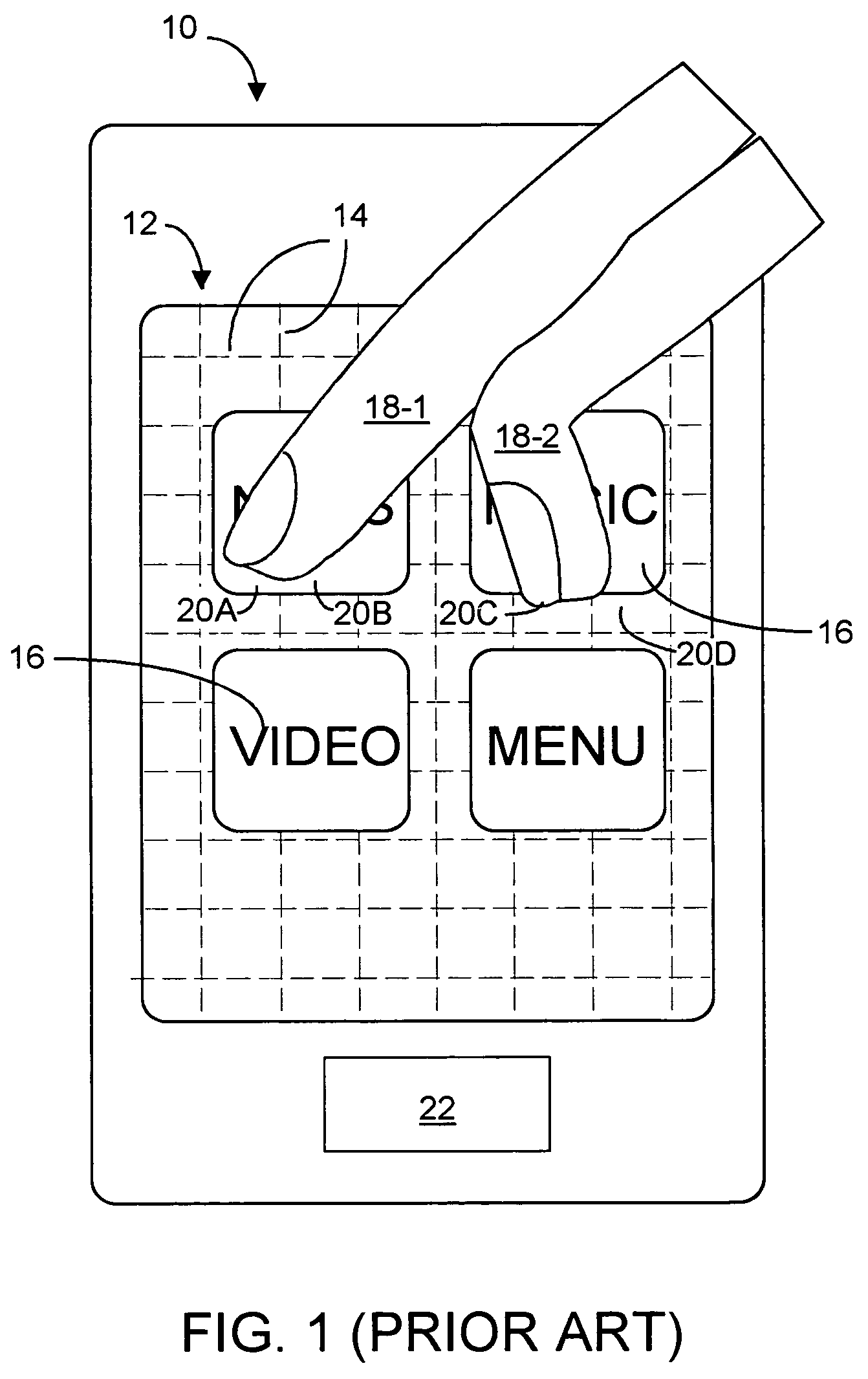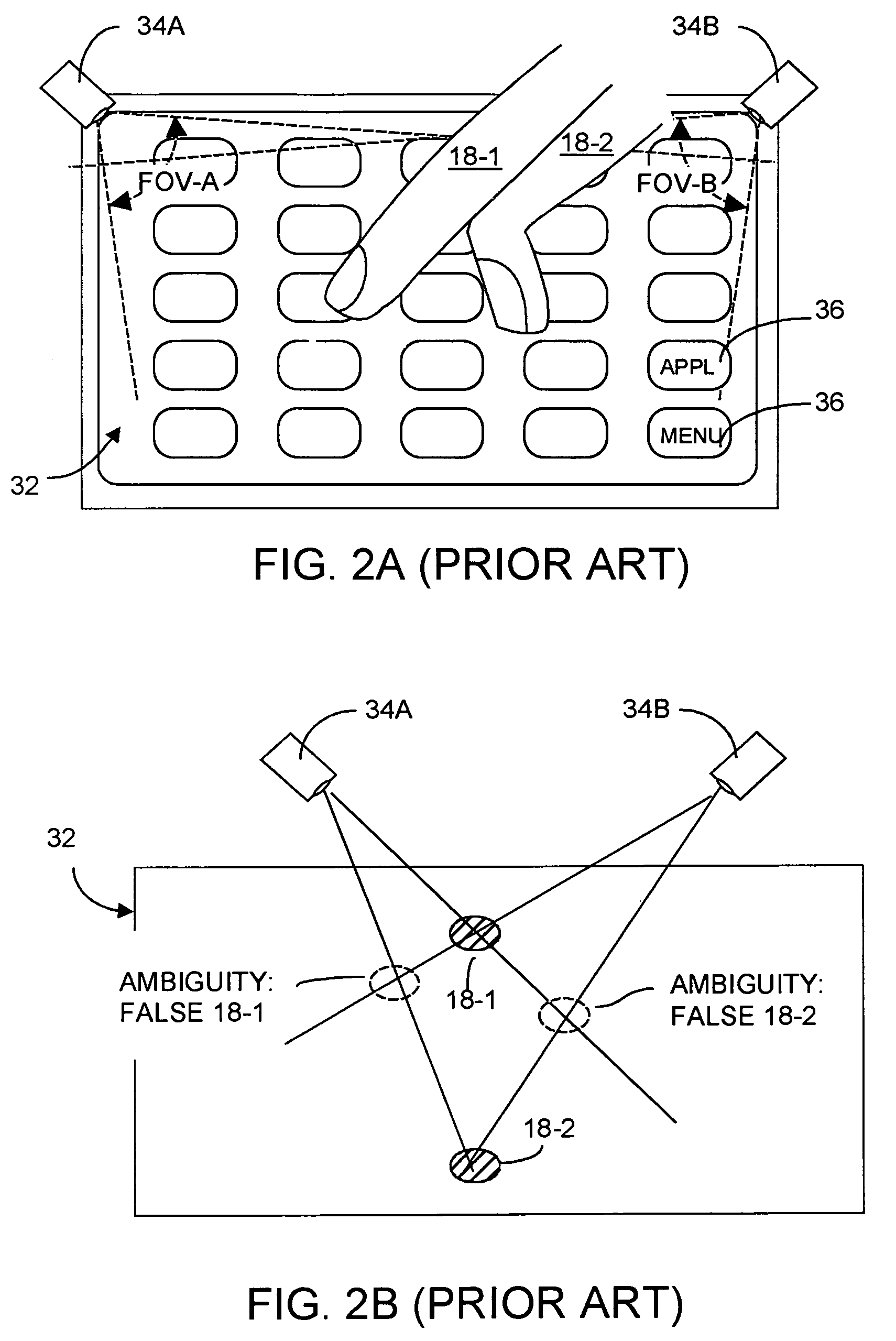Method and system for recognition of user gesture interaction with passive surface video displays
a video display and gesture recognition technology, applied in the field of user interaction with video displays, can solve the problems of difficult retroactive application of this technology to an existing off-the-shelf type display, difficult to detect when the user or user-controlled stylus hovered near but not yet contacting the video display screen, and inability to quickly apply the technology retroactively. to achieve the effect of reducing the likelihood of one finger occlusion, quick resolution of distance ambiguities, and reducing the likelihood of on
- Summary
- Abstract
- Description
- Claims
- Application Information
AI Technical Summary
Benefits of technology
Problems solved by technology
Method used
Image
Examples
Embodiment Construction
[0057]FIG. 7A depicts a system 100 comprising first and second TOF systems 110, 120 disposed so as to have fields of view that include the surface region 130 of a large video display 140. It is understood that the fields of view are sufficiently large to enable each system 110, 120, etc. to acquire three-dimensional data from substantially all of the useful portions of surface region 130 of display 140. Display 140 may have a diagonal of 40 cm or more, and may include, without limitation, a projection display, a conventional CRT display, an LCD display. Images and objects 150, 160 may be dynamically presented on display 140 for user viewing and interaction. The creation and presentation of such images and objects preferably is under control of a processor 145 coupled to display 140. In FIG. 7A as with other figures herein, for ease of illustration, signal lines between the various TOF systems, e.g., 110, 110′, 110″, 120, 120′, 120″, and processor 145 are not depicted. Processor 145 ...
PUM
 Login to View More
Login to View More Abstract
Description
Claims
Application Information
 Login to View More
Login to View More - R&D
- Intellectual Property
- Life Sciences
- Materials
- Tech Scout
- Unparalleled Data Quality
- Higher Quality Content
- 60% Fewer Hallucinations
Browse by: Latest US Patents, China's latest patents, Technical Efficacy Thesaurus, Application Domain, Technology Topic, Popular Technical Reports.
© 2025 PatSnap. All rights reserved.Legal|Privacy policy|Modern Slavery Act Transparency Statement|Sitemap|About US| Contact US: help@patsnap.com



